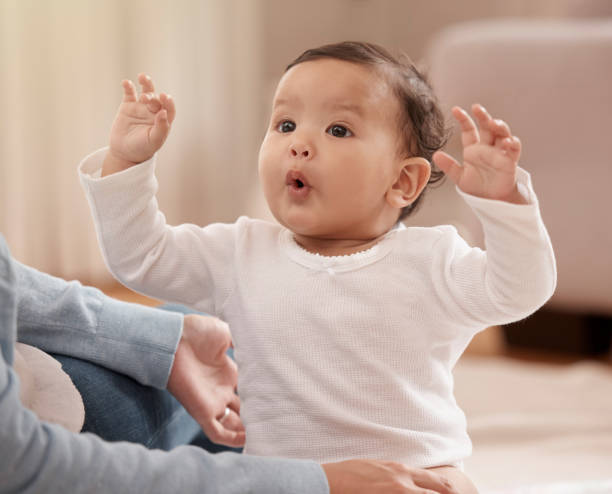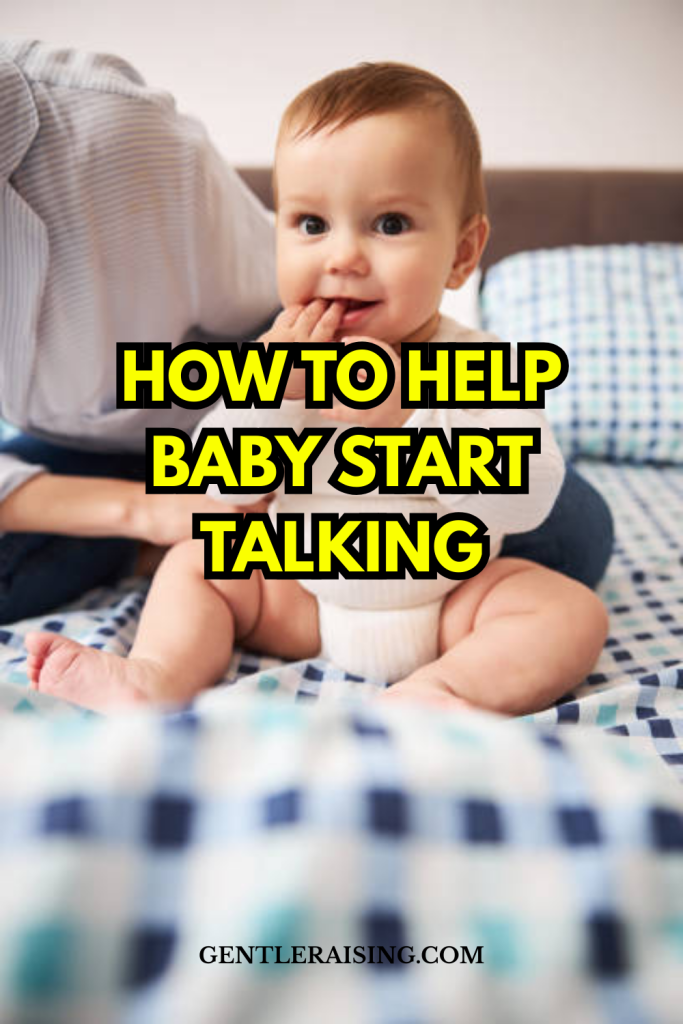Can Babies Really Start Talking at 6 Months? (Short answer: kinda, yes)
Let’s be real, when your baby makes that first coo or babble, it feels like they just dropped their first album. Every parent secretly hopes their baby will start talking early. And while full-on sentences are still far away at 6 months, guess what? They’re already laying down the groundwork for speech.
At six months, your little one is more than just a bundle of giggles and squeals. They’re experimenting with sounds, watching your mouth like it’s the most interesting thing on TV, and soaking up everything you say like a sponge that never sleeps.
So yes, “talking” at 6 months doesn’t mean, “Hey, Mom, pass the remote.” But it absolutely means babbling, responding to your voice, and trying to mimic sounds. And that’s a big deal.
So What Counts As Talking Anyway?
Before we talk “talking,” let’s unpack what early language development actually means. Babies don’t just wake up one day and speak; language is a process that builds layer by layer, starting from sounds and syllables.
Here’s what that might look like at 6 months:
- Babbling like “ba-ba” or “ga-ga”
- Making raspberries (yes, those spit-filled sound effects count!)
- Mimicking the tone and rhythm of adult speech
- Responding with eye contact and vocalisation when you talk to them
If your baby is doing any of that, congrats, they’re already on the road to talking.
Tip #1: Talk to Them Like They Understand Everything
It might feel silly explaining your morning coffee ritual to a baby, but honestly? That’s the gold. Babies are little language machines. The more they hear you speak, the more neural connections they make.
Narrate your day.
“Okay, now Mommy’s folding the laundry… oh no, the sock monster struck again!”
Use real words. Skip the watered-down vocabulary. Say “refrigerator,” not “fridgey.”
The rhythm, tone, and richness of your speech teach them so much more than we give them credit for.
Tip #2: Pause for Their “Reply”
Here’s a sneaky trick: next time you’re chatting with your baby, stop for a second. Just pause.
Chances are, they’ll respond with a squeal, a babble, a wide-eyed stare. That’s conversation, baby-style.
We call this “serve and return” interaction. You “serve” a sentence, and they “return” with a response. This back-and-forth isn’t just adorable, it’s a powerful brain-builder. Over time, it teaches them the natural rhythm of conversation.
Tip #3: Mirror Their Sounds (Yes, Echo Back That “Goo”)
When your baby says “ba,” say “ba” right back. Exaggerate it a little. Stretch the vowels. Light up your face.
Why? Because you’re showing them that their voice matters, that communication is a two-way street. This kind of mirroring boosts confidence, encourages repetition, and helps babies link sounds with reactions.
Think of it like karaoke night, but with baby noises. No judgment, just pure joy.
Tip #4: Read Aloud (Even If It’s the Back of a Shampoo Bottle)
Reading to a baby who can’t sit up yet? Yep. Do it.
Books introduce new words, rhythms, and patterns. They create routines. They even teach intonation (that sing-song voice you use when reading “Goodnight Moon?” Super important).
And let’s be honest, your baby doesn’t care if it’s a board book or your grocery list. It’s your voice, your tone, your presence that counts.
Tip #5: Sing, Hum, Whisper, Repeat
Music is speech’s cool cousin. Singing slows down language, highlights syllables, and brings emotion into the mix.
Lullabies, nursery rhymes, silly jingles you make up on the fly, they all count. Whisper silly sounds. Repeat simple songs. Even humming as you cook can create a sound-rich environment.
Just make it part of the everyday soundtrack.
Tip #6: Use Baby Sign Language (It’s Not Cheating, Promise)
Some parents worry that baby sign language might delay talking. Actually? It helps.
Teaching basic signs like “milk,” “more,” or “all done” gives babies a way to express themselves before they can articulate the words. That reduces frustration (for both of you) and boosts their understanding of communication.
Plus, it builds confidence, which makes them more eager to try talking.
Tip #7: Limit Passive Screen Time (Sorry, Cocomelon)
We know. Sometimes, a 10-minute breather while Baby Shark runs on repeat feels like survival. But studies show that passive screen time (where the baby just stares at a screen) doesn’t teach language the way human interaction does.
Instead, if you’re going to do screen time, make it interactive. Watch together. Point at things. Talk about what you see. Make it social.
Tangent: Your Baby’s Personality Affects How They Talk
Here’s a fun detour. Some babies are chatterboxes from the jump. Others? They’re more reserved. Doesn’t mean anything is wrong; just like adults, babies have their own style.
Some like to observe longer before jumping in. Others love noise and chaos. Knowing your baby’s personality helps you tailor how you engage with them.
Sensitive baby? Soften your tone.
Super social baby? Amp up the silly games.
Either way, you’re laying down the same language bricks.
Tip #8: Show Them Real Faces and Real Feelings
You know what’s better than flashcards? Your face.
Your expressions, your voice changes, your big goofy grin when they say “da-da” by accident, those moments are powerful.
Babies learn to associate sounds with meaning by watching your reactions. So go ahead, exaggerate those eyebrows. Make a surprised face. Look delighted when they babble. That feedback loop is pure gold.
Tip #9: Embrace the Repetition (Even If You’re Bored to Tears)
Babies love repetition. It might drive you bananas, but saying the same words or phrases over and over helps them learn.
“Want your bottle? Here’s your bottle! Ooooh, bottle time!”
It builds memory. It strengthens associations. And yep, it helps with talking.
So if you feel like you’re a broken record, congrats. You’re actually doing it right.
Tip #10: Celebrate Every Sound, Not Just Words
This part matters: cheer for the “ba” just like you would for “mama.”
When babies realise their sounds get attention, they do it more. That positive reinforcement lays the groundwork for trying new sounds, then words, then phrases.
So bring the fanfare. You’re raising a little speaker-in-training.
When Should You Worry (and When Not To)
Every baby is different. Some talk early, some take their sweet time. That said, if by 9 months your baby isn’t babbling at all, or doesn’t respond to sound, it’s worth checking in with your paediatrician.
Hearing issues, developmental delays, or even frequent ear infections can impact speech development. Early support can make a world of difference.
But if they’re cooing, babbling, watching you closely, and generally tuned in? You’re on track.
Final Thought: It’s a Marathon, Not a Mic Drop
Language isn’t a switch; it’s a slow, magical build. From burbles to babbles, to broken words and finally, sentences. Every “ga,” “oo,” and “ma” is a stepping stone.
So talk, sing, repeat, read, react, cheer, and pause.
Because even if they’re not saying full words yet, they’re absolutely listening. Learning. Getting ready.
And one day soon, you’ll be wiping tears from your eyes when they finally say, “I love you.” And it all started with a silly little “ba.”

